Brian May and Arielle detail the evolution of the Brian May Guitars Arielle
The Queen guitarist welcomes a new addition to his BMG range, designed by rising guitar force Arielle
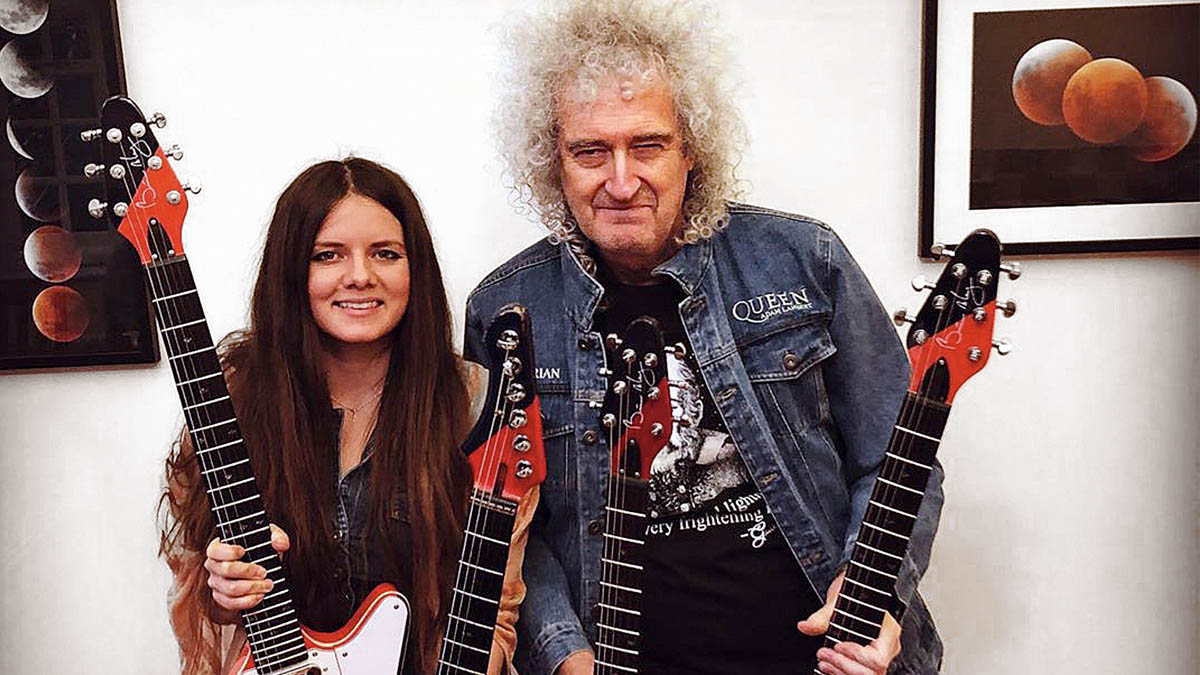
The sound of Brian May’s Red Special guitar is one of the most singular in rock. With its unique switching system wringing every drop of tone out of his trio of Burns Tri-Sonic pickups, it’s been Brian’s faithful companion on a hoard of hit records.
American musician Arielle set out to replicate the Red Special’s tonal palette on her own self-designed instrument, ‘Two-Tone’, and it wasn’t long before discussions began regarding adding it to the stable of Brian’s guitars, albeit in a slightly modified form.
The result is a beguiling blend of influences – a little bit Firebird here, with maybe a touch of Explorer there, but at its heart it has the fire and fury of a thoroughbred with a nod to the guitar that Brian designed with his dad in the garden shed many moons ago.
We caught up with both Brian and Arielle to get the lowdown on the new BMG Arielle Guitar.
Brian May
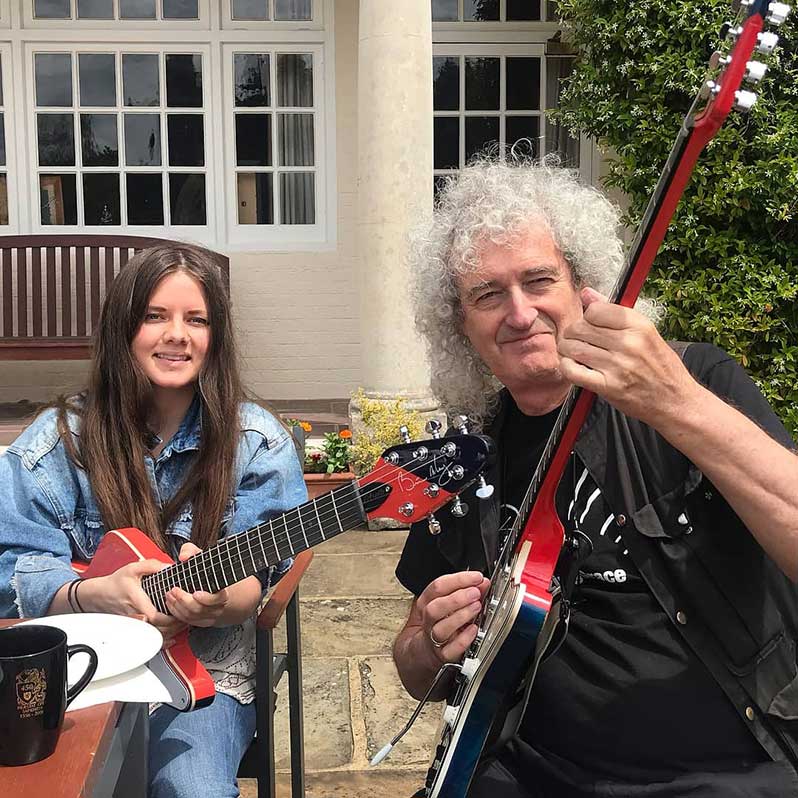
How did you first connect with Arielle?
“I’ve known Arielle for a long, long time. Way before anyone had seen her, as such. We’ve kept in touch over the years and so I did know that she had designed her own guitar, but I hadn’t seen it until we bumped into each other on one of our tours. She gave it to me to play and so that was really the turning point. I picked it up and it felt like home, really; I immediately felt that I could do what I need to do on it.
“There are certain things on my guitar that have become almost part of me, like the switching on the pickups and the feel of the neck and a few other things that are very ‘me’. I didn’t expect that to happen because the guitar looks so different from anything that I’ve enjoyed, so when I picked it up and it felt so absolutely friendly to me and made the right kind of noises – very much the right kind of noises – I just thought how interesting it would be to collaborate.”
Get The Pick Newsletter
All the latest guitar news, interviews, lessons, reviews, deals and more, direct to your inbox!
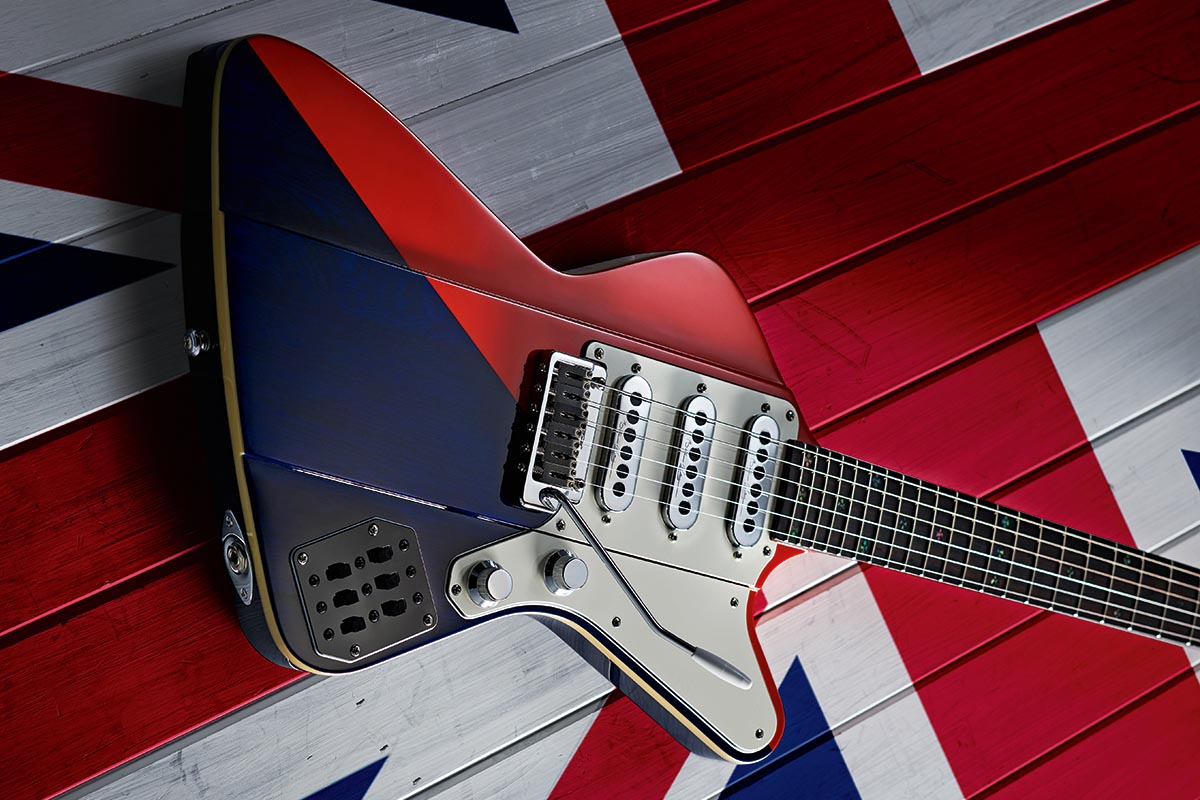
How did the process begin?
“We set the guidelines down immediately, I think, because Arielle said she would like to have the pickups from my guitar and the switching system, which is something that me and my dad originated. It gives you a very wide range of tones. Arielle and I are probably the only two people in the world who can instantly recognise which of those settings the guitar is on.
“I sent her a tape last night or the night before and said, ‘Have a listen to this,’ and she went, ‘Ah yes, that was the bridge pickup and the fingerboard pickup out of phase,’ and I went, ‘Yep.’ So we combined some of the features of my guitar and Arielle’s.
“The headstock is very much my thing. I couldn’t understand why guitar headstocks have machineheads all up one side and you had to put clamps in to make the strings sit in the nut, you know? Why do people do that? Because you can just make the strings come straight through, you lessen the friction and each one comes through its particular point that is already lined up on the headstock.
“We agreed we would do that – the symmetrical headstock – but it’s quite nice because it has the asymmetrical flash on it, paint-wise, so it very much harmonises with the feel of Arielle’s guitar body.”
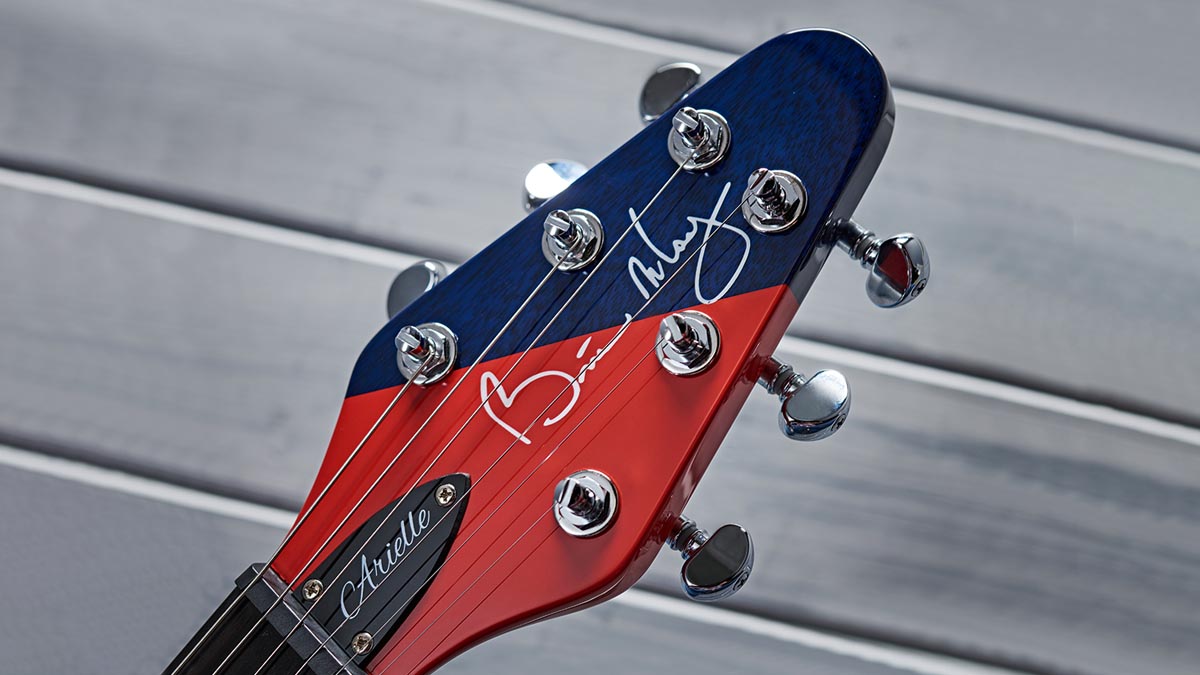
Did the design for the BMG version of Arielle’s guitar evolve over time?
“It took a little bit of evolution, a bit of time. The big thing that is different about Arielle is that she’s much more sensitive to woods than I was. I just kinda made [mine] out of junk. I had a 100-year-old fireplace and that was the piece of wood that was hanging around in my dad’s workshop and so that was going to be the neck. I had some blockboard, I had some veneer, I had some oak to make the body out of, so that’s what happened.
It would be nice for Brian May Guitars to make something that was angled towards a woman because women guitar players are becoming so much more of a force in rock music and I love that
Brian May
“Now, I don’t know whether it was good luck or good guidance or whatever, but it worked for my guitar. But Arielle has tried a lot of different woods and she was very particular about how the woods would be combined to make this guitar, and we actually tried a few things during the production prototypes. To be honest, I’d never paid that much attention to it, but now I get it. Now I understand why she was so particular because this guitar really does have a sort of springy lightness to it.
“And what I’ve missed out, I suppose, is that Arielle said that no guitar has ever been designed with a woman in mind – hasn’t been designed with that sort of sensitivity toward a woman’s body shape.
“So this guitar appealed to me on that basis, that it would be nice for Brian May Guitars to make something that was angled towards a woman because women guitar players are becoming so much more of a force in rock music and I love that. That’s the way it always should have been.”
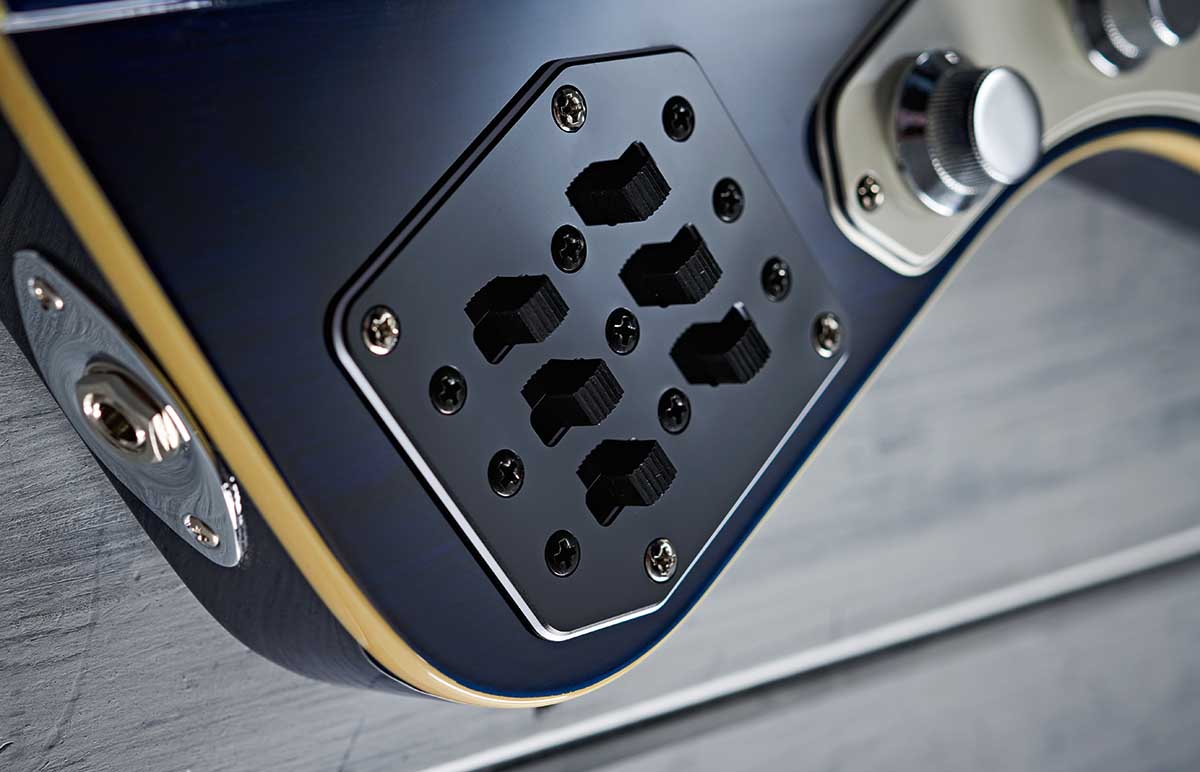
The Arielle guitar has the same pickup switching system as your Red Special. Take us through the various options available.
“I had a guitar that I’d made and initially I wound three of my own pickups and put them on there and, of course, you get three sets of wires – where do they go? How do you hook them up? So I did my experiments. I had to choose which wires we connect up and I made a little board with crocodile clips on so I could change them. Play a chord, change it, play another chord. And it was like, ‘What sounds can we get out of this?’
The big thing that is different about Arielle is that she’s much more sensitive to woods than I was. I just kinda made mine out of junk
Brian May
“I was amazed because the variety was immense. The warmest possible sound would be wiring them all up in series, in phase. A very warm plummy sound, deep, very resonant, and I thought, ‘Well, I need that, that’s one of things I really like,’ because it’s good for picking, it sounds almost like an acoustic guitar.
“Then if you put any one of those out of phase you get a very different colour. So, if I put the middle one out of phase it made a very angry sound, and I used to describe it as ‘bread and butter’ because there was an old record called Bread and Butter and it had a rhythm guitar sound that kinda went [makes snarly noises].
“There are a lot of combinations. You have three pickups on and off, and you have three pickups that you can change the phase of. So my next step was to wire it up with switches, on and off, and reversing switches so that I could change the polarity. I decided I needed all the combinations. I had decided that I got more range by wiring them in series than in parallel, and I still think that’s true. But I now have a guitar where I can change it from series to parallel and that’s very interesting because it gives me even more range.”
Arielle
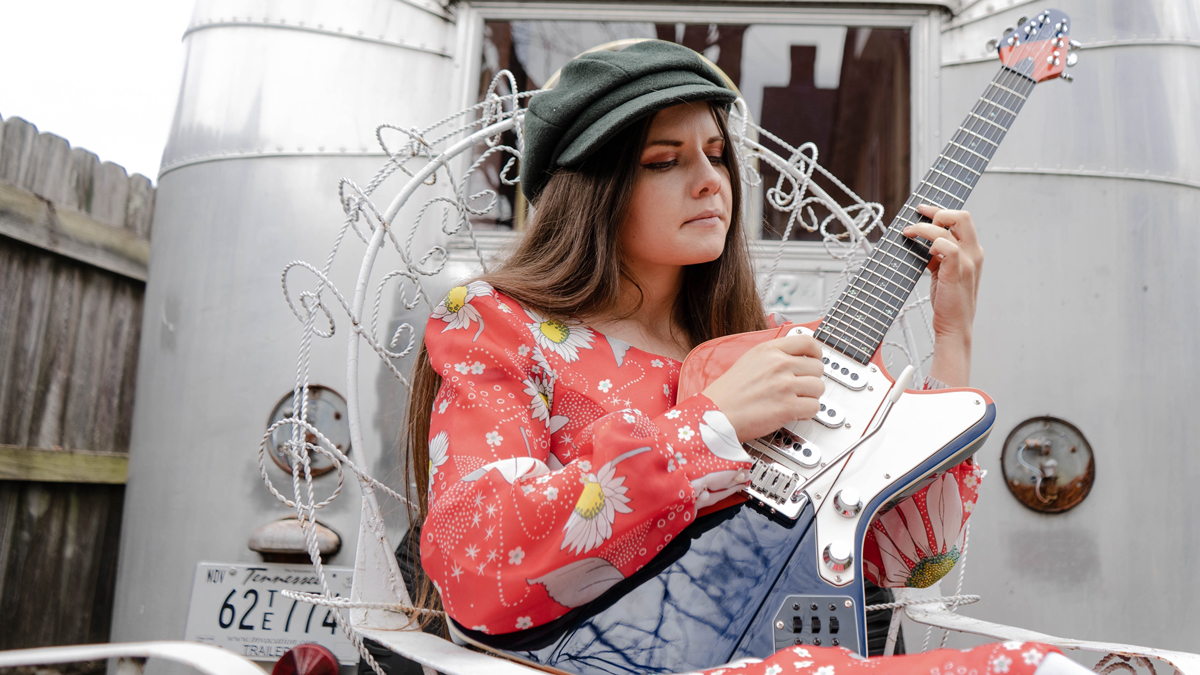
US-born Arielle was a child prodigy who began studying music at the age of five. She furthered her studies in both LA and London before touring the world with artists such as Graham Nash, Joe Bonamassa and Gregg Allman.
Arielle met Brian May when she played a key role in the Queen musical We Will Rock You, and when she designed her own guitar, the Queen guitarist recognised a lot of similarities between ‘Two-Tone’ and his very own Red Special.
Here, Arielle outlines the transition from her own ‘Two-Tone’ design to becoming the new kid on the block at Brian May Guitars.
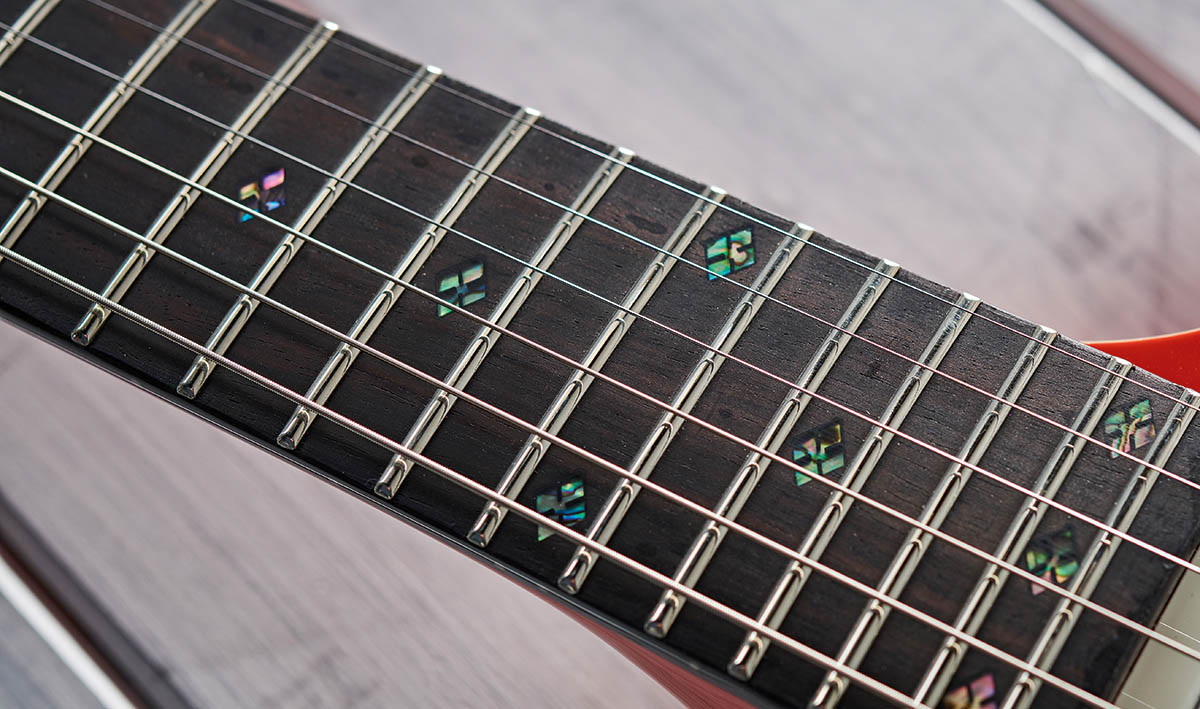
What made you want to develop your ‘Two-Tone’ guitar?
“I was on the road with Eric Johnson and people kept asking, ‘Where do I get it?’ and I was like, ‘Well, there’s nowhere to get it…’ and I kept getting that question over and over again. I just decided that a friend of mine and myself were going to make a few of them a month and that would be it.
“At least people would have an option. So I was doing a tour through the UK and I met up with Brian and we were just catching up and when I brought it up he said, ‘Who’s putting it out for you?’ and I said, ‘Just myself,’ and he said, ‘Why doesn’t Brian May Guitars do it?’
“Since then we took the features that we liked about my guitar that we thought were the strongest, and something that could appeal to more than just myself. We took elements of Brian’s guitar, too, that we both really love and made a guitar that’s mine, but has a touch of Brian in there as well.”
How did you begin the process of designing the guitar – did you start off with a drawing?
“Yeah, I had about 10 different sketches. Some people compare it with a Firebird, but when you overlay them you can see that the body itself is just a hybrid between an Explorer and a Firebird.”
I recorded my album entirely live: one take, half analogue, half digital to capture music like people did in the '60s and '70s
Arielle
What about the guitar’s construction?
“The body is korina, the neck is mahogany, and that’s a little bit different to Brian’s because his is all-mahogany with an ebony fingerboard. Then we have the pickup selectors like Brian has.
“The things that are a little bit different is that it has a raised centrepiece, more like a Firebird. It’s really light, at least it’s lighter than [my ‘Two-Tone’ original], which had a reverse headstock, but we kept Brian’s three-on-three Flying V kinda headstock. Of course, we have the Tri-Sonic [style] pickups as well, like Brian’s, but we have a different bridge and the scale length is closer to 24 inches, so it’s closer to his guitar.”
Which version of the guitar did you use on your new album, Analog Girl in a Digital World?
“I think we had four variations of the prototype and I used the one right before the final one. And I recorded my album entirely live: one take, half analogue, half digital to capture music like people did in the '60s and '70s.”
What gear do you use live?
“I kinda take the Eric Johnson approach of having an amp for each separate tone that I want and so I used my Blankenship Fat Boy for my lead, I used a Two-Rock for my clean and then my Divided By 13 RSA 31 for my dirty rhythm. They’re never on at the same time and I have them set up for different effects. In my lead chain I just have an overdrive pedal, which is a J Rockett Animal – they’ve changed them now, but I use an old one – and I use a TC Flashback for the delay.
“Then, for my clean chain, I use a vintage '80s chorus pedal and I use a Catalinbread Echorec. Then I have a compressor as well. For the overdriven tone I just kinda break it up with the amp and then I switch between them depending on where I am in the song, which helps me because I’m singing most of the time so I don’t really have time to stomp around on pedals or anything.”
- Analog Girl in a Digital World is out now. For more information on the Arielle guitar, head to Brian May Guitars.
With over 30 years’ experience writing for guitar magazines, including at one time occupying the role of editor for Guitarist and Guitar Techniques, David is also the best-selling author of a number of guitar books for Sanctuary Publishing, Music Sales, Mel Bay and Hal Leonard. As a player he has performed with blues sax legend Dick Heckstall-Smith, played rock ’n’ roll in Marty Wilde’s band, duetted with Martin Taylor and taken part in charity gigs backing Gary Moore, Bernie Marsden and Robbie McIntosh, among others. An avid composer of acoustic guitar instrumentals, he has released two acclaimed albums, Nocturnal and Arboretum.
“Even the thought that Clapton might have seen a few seconds of my video feels surreal. But I’m truly honored”: Eric Clapton names Japanese neo-soul guitarist as one to watch
“You better be ready to prove it’s something you can do”: Giacomo Turra got exposed – but real guitar virtuosos are being wrongly accused of fakery, too











